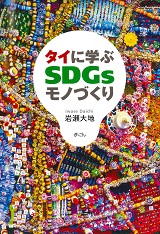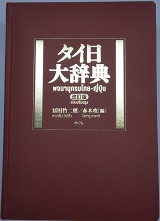・読者登録
・団体購読のご案内
・「編集委員会会員」を募集
橋本勝21世紀風刺絵日記
記事スタイル
・コラム
・みる・よむ・きく
・インタビュー
・解説
・こぼれ話
特集
・中東
・アジア
・農と食
・人権/反差別/司法
・国際
・イスラエル/パレスチナ
・入管
・地域
・文化
・欧州
・市民活動
・検証・メディア
・核・原子力
・環境
・難民
提携・契約メディア
・AIニュース


・司法
・マニラ新聞

・TUP速報



・じゃかるた新聞
・Agence Global
・Japan Focus

・Foreign Policy In Focus
・星日報
Time Line
・2025年04月05日
・2025年04月04日
・2025年04月01日
・2025年03月31日
・2025年03月30日
・2025年03月29日
・2025年03月28日
・2025年03月27日
・2025年03月26日
・2025年03月23日
|
|
2008年03月30日15時56分掲載
無料記事
印刷用
時事英語一口メモ
【46】「影の銀行システム」への取り付け騒ぎ
<A href="http://jijieigo.at.webry.info/200804/article_3.html" target="_blank">ブログ版</A>
経営破たんした米証券大手のベアー・スターンズは、米銀行大手のJPモルガン・チェースにfire sale(激安で)救済買収された。メディアはこれを、連邦準備制度理事会(FRB)による”shotgun marriage”(強制結婚)と呼んでいる。「金融危機は新自由主義グローバリゼーションの終えんと新たな規制の時代の始まりを告げるもの」(IPS3月20日)なのか。破たんは、bank run(取り付け騒ぎ)で資金繰りが急速に悪化したためだ。エコノミストによると、現在起きている金融危機はrun on the shadow banking system(影の銀行システムへの取り付け騒ぎ)であるという。”shadow banking system”とは何か?(鳥居英晴)
プリンストン大学教授、ポール・クルーグマンはニュ-ヨーク・タイムズ紙のコラム(3月21日)でこの言葉を使っている。
Wall Street chafed at regulations that limited risk, but also limited potential profits. And little by little it wriggled free ― partly by persuading politicians to relax the rules, but mainly by creating a “shadow banking system” that relied on complex financial arrangements to bypass regulations designed to ensure that banking was safe.
(ウォール街はリスクを制限した規制にも、見込まれる利益を制限した規制にもいらついた。少しずつ、自由にうまく切り抜けた。それは、規制を緩和するよう政治家を説得することと、主には、銀行の安全性を確保するためにつくられた規制をくぐり抜けるための複雑な金融の仕組みに依存した「影の銀行システム」を作り出すことによって行われた)
As the years went by, the shadow banking system took over more and more of the banking business, because the unregulated players in this system seemed to offer better deals than conventional banks. Meanwhile, those who worried about the fact that this brave new world of finance lacked a safety net were dismissed as hopelessly old-fashioned.
(時が経つにつれて、影の銀行システムは銀行業務をますます乗っ取るようになった。なぜなら、このシステムで規制をされていない者は従来の銀行より良い条件を提示したからだ。一方、この金融の素晴らしい新世界はセイフティ・ネットがないと心配した者は、どうしようもない時代遅れであると片づけられた)
The financial crisis currently under way is basically an updated version of the wave of bank runs that swept the nation three generations ago. People aren’t pulling cash out of banks to put it in their mattresses ― but they’re doing the modern equivalent, pulling their money out of the shadow banking system and putting it into Treasury bills. And the result, now as then, is a vicious circle of financial contraction.
(現在起きている金融危機は基本的に、3世代前に米国を襲った銀行の取り付け騒ぎの最新版である。人々は銀行から引き出した現金をタンスにしまっておくのではなく、現代版では、影の銀行システムから引き出したお金は米国債に換えている。その結果は、金融収縮の悪循環である)
85年の歴史を持ったベアー・スターンズはsecurities firm(証券会社)。investment bank(投資銀行)とも表現されるが、investment bankは機関投資家を相手にする証券会社のことである。個人などから預かった預金を元手に企業に融資を行うcommercial bank(商業銀行) とは区別される。Investment bankはnon-bank financial institution(ノンバンクの金融機関)である。米国では、1980年代から金融・資本市場の改革が進み、1999年にグラム・リーチ・ブライリー法が成立、金融制度の改革が完了した。これによって、1933年銀行法(通称グラス・スティーガル法)によって規定されていた銀行、証券、保険の垣根が66年ぶりに撤廃された。
ニューヨーク・タイムズ(3月23日)はベアー・スターンズの破たんを報じる記事の中で、世界最大の債券運用会社PIMCO(ピムコ)のCIO(最高投資責任者)、ビル・グロースの言葉を引用している。
“Bear Stearns has made it obvious that things have gone too far,” says Mr. Gross, who plans to use some of his cash to bargain-shop. “The investment community has morphed into something beyond banks and something beyond regulation. We call it the shadow banking system.”
(「ベアー・スターンズは、あまりにやり過ぎたということを明白にした」とグロースは言う。彼は現金を使ってお買い得品を買うことを計画している。「投資業界は銀行を超えた何か、規制を超えた何かに変身してしまった。われわれは、それを影の銀行システムと呼ぶ」)
“shadow banking system“という言葉を流行らせたのは、PIMCOである。PIMCOのマネージング・ディレクター、ポール・マカリーは2007年8/9月の同社のGlobal Central Bank Focusでこの言葉を初めて使った。
And in the current circumstance, it’s called a run on what I’ve dubbed the "shadow banking system" – the whole alphabet soup of levered up non-bank investment conduits, vehicles, and structures.
(現在の状況では、それは、わたし名付けたものである「影の銀行システム」に対する取り付け騒ぎと呼ばれる。それは、レバレッジを用いたノンバンクの投資導管やビークル、ストラクチャーといったアルファベットの略語であふれたものの総体である)
金融用語のconduitはローン債権などの資産を流動化する仕掛けで、導管と訳される。具体的には、SIV(Structured Investment Vehicle)やCDO(Collateralized Debt Obligation)、ABS(Asset Backed Security)など。SIVは投資目的に設立された特別目的会社。資産を担保にして短期金利で調達した低コストの資金を長期証券のCDO(債務担保証券)やABS(資産担保証券)に投資して利ざやを稼ぐ。常に短期資金を借り換える(roll over)必要がある。
「債券王」の異名を持つグロースは2007年12月の同社のInvestment Outlook で次のように述べている。
"Skim milk masquerades as cream," warned Gilbert & Sullivan a century ago and sure enough, modern day subprimes packaged into financial conduits with noms de plume such as "SIVs" and "CDOs" pretended to be AAA rated cubes of butter. Financial institutions fell for the charade hook, line, and sinker and now we all suffer the consequences. Defaults are rising, the dollar’s sinking, and good Lord―even Google’s stock price is going down. Something must really be wrong here.
(100年前にギルバートとサリバンは「脱脂粉乳が生クリームになりすましている」と警告した。SIVやCDOといった名前の金融導管に組み込まれた現代のサブプライムも、最上級の信用格付けのトリプルAのバターを装っていた。金融機関は信じ込まされ、いま全員がその報いを受けている。債務不履行は増加し、ドルは下落している。そして、あのグーグルの株価ですら下げている。何かがおかしくなっているに違いない)
It is. What we are witnessing is essentially the breakdown of our modern day banking system, a complex of levered lending so hard to understand that Fed Chairman Ben Bernanke required a face-to-face refresher course from hedge fund managers in mid-August. My PIMCO colleague, Paul McCulley, has labeled it the "Shadow Banking System" because it has lain hidden for years―untouched by regulation―yet free to magically and mystically create and then package subprime mortgages into a host of three-letter conduits that only Wall Street wizards could explain.
(実際、そうである。われわれが目にしているのは本質的に現代の銀行システムの崩壊である。このレバレッジ融資が複雑に絡み合った銀行システムを理解することはきわめて難しく、FRBのバーナンキ議長は、8月中旬にヘッジファンドのマネージャーから直接、再講習を受けたほどだ。PIMCOの同僚、ポール・マカリーはこれを「影の銀行システム」と表現した。なぜなら、それは長年にわたって影に身を潜めてきたからであり、規制に縛られることなく、魔法のような不可解な方法で、サブプライム・ローンが作り出され、ウォール街の専門家にしか説明できない3文字の名前をつけられた多くの導管に組み込まれた)
Yet, as is humanity’s wont, we overdid a good thing and the subprime skim milk has soured.
(しかし、人間の常として、それが行き過ぎてしまい、サブプライムという脱脂粉乳が腐臭を発し始めた)
悲観論者の代表でニューヨーク大学スターンビジネススクール教授のヌリエル・ルービニは”shadow financial system”(影の金融システム)という言葉を使っている。ルービニがRGE Monitorに2月5日に発表していた“The Rising Risk of a Systemic Financial Meltdown: The Twelve Steps to Financial Disaster”(金融の系統的メルトダウンの高まるリスク:金融破局へと至る12のステップ)と題する論文では、ベアー・スターンズの破たんのような状況は9番目に想定されていた。
Ninth, the "shadow banking system" (as defined by the PIMCO folks) or more precisely the "shadow financial system" (as it is composed by non-bank financial institutions) will soon get into serious trouble. This shadow financial system is composed of financial institutions that - like banks - borrow short and in liquid forms and lend or invest long in more illiquid assets. This system includes: SIVs, conduits, money market funds, monolines, investment banks, hedge funds and other non-bank financial institutions. All these institutions are subject to market risk, credit risk (given their risky investments) and especially liquidity/rollover risk as their short term liquid liabilities can be rolled off easily while their assets are more long term and illiquid.
(9番目。PIMCOの人々が定義する「影の銀行システム」、ノンバンクの金融機関からなっているので、より正確には「影の金融システム」が、まもなく深刻な問題に陥るであろう。この影の金融システムは銀行と同じように、短期の流動性資金で借り、長期の非流動性資産に貸したり、投資したりする金融機関からなっている。このシステムには、SIV、導管、短期金融市場の資金、モノライン(金融保証保険会社)、投資銀行、ヘッジファンド、その他のノンバンクの金融機関が含まれる。短期の流動性債務はすぐに借り換えができなくなることがあるが、資産は長期で非流動的であるので、これらの機関はすべて、市場の抱えるリスク、信用リスク、また特に、流動性・借り換えリスクにさらされる)
Unlike banks these non-bank financial institutions don't have direct or indirect access to the central bank's lender of last resort support as they are not depository institutions. Thus, in the case of financial distress and/or illiquidity they may go bankrupt because of both insolvency and/or lack of liquidity and inability to roll over or refinance their short term liabilities. Deepening problems in the economy and in the financial markets and poor risk managements will lead some of these institutions to go belly up.
(銀行と違って、こうしたノンバンクの金融機関は預託機関ではないので、中央銀行の最後の貸し手の支援を直接、間接に受けることができない。こうして、金融危機や非流動性の事態になった場合、支払い不能と流動性の不足、短期債務の借り換えができなくなって破産するかもしれない。経済や金融市場での問題の深刻化、リスク管理の乏しさからこうした機関のいくつかが倒産するであろう)
流動性とは何か。PIMCOのマカリーはこう説明している(2007年10月Global Central Bank Focus)。
My short answer is that liquidity is not a pool of money but rather a state of mind.
(簡単に言うと、流動性は資金のプールではなく、心理状態である)
At the macro (systemic) level, liquidity is not about how many pieces of paper with pictures of dead presidents on them we have in our wallets, but rather about how much utility we derive from having them in our wallets. Or, as the cliché went in my youth in rural Virginia, liquidity is about whether the dead presidents are burning a hole in our wallets, or our pockets, as it were.
(マクロ(体系的な)レベルでは、流動性は、故大統領が描かれた紙幣を財布の中に何枚持っているかではなく、紙幣を財布に持っていることでどれだけの効用が得られるかを表す。わたしが若いころのバージニアの田舎での決まり文句のように、言うなれば流動性とは、財布やポケットにある紙幣を使いたくてうずうずしているかどうかということだ)
ルービニは、ベアー・スターンズの破たん後の3月17日の論文で、現在の危機は大恐慌以来の最悪の米国の金融危機であるとしている。
What we are now observing – with the case of Bear Stearns and the recent disaster among SIVs, conduits, run on a number of hedge funds and money market funds is a generalized liquidity run on this shadow financial system.
(われわれがいま見ているもの、ベアー・スターンズ、SIV、導管での最近の破たん、多くのヘッジファンドやマネーマーケット・ファンドへの取り付け騒ぎは、この影の金融システムの全体に広がった流動性の取り付け騒ぎである)
The response of the Fed to this run has been radical and in the form of the extension of the lender of last resort support to non bank financial institutions. Specifically, the new $200 bn term facility allows primary dealers – many of which are non banks – to swap their toxic mortgage backed securities for US Treasuries; second, the Fed provided emergency support to Bear Stearns and following the purchase of Bear Stearns by JPMorgan, is now providing a $30 bn plus support to JPMorgan to help the rescue of Bear Stearns; finally, now the Fed is allowing primary dealers to access the Fed discount window at the same terms as banks.
(この取り付け騒ぎへのFRBの対応は過激なものであり、ノンバンク金融機関へ最後の貸し手の支持を延長する形をとっていた。特に、新たな2000億ドルの流動性供給措置によって、多くがノンバンクである政府証券公認ディラー(米国債入札参加資格を持つ金融機関)は不動産担保証券を国債に換えることができるようになった。第二に、FRBはベアー・スターンズに緊急支援を提供し、JPモルガンによるベアー・スターンズ買収の後、ベアー・スターンズの救済を助けるために、JPモルガンに300億ドル強を提供している。また、FRBは政府証券公認ディーラーに銀行と同じ条件でFRBのディスカウント・ウィンドウ(商業銀行に直接資金を供給する制度)を利用できるようにしている)
This is a most radical action and a signal of how severe the crisis of the banking system and non-bank shadow financial system is. This is the worst US financial crisis since the Great Depression and the Fed is treating it as if it was only a liquidity crisis. But this is not just a liquidity crisis; it is rather a credit and insolvency crisis. And it is not the job of the Fed to bail out insolvent non bank financial institutions. If a bail out should occur this is a fiscal policy action that should be decided by Congress after the relevant equity holders have been wiped out and senior management fired without golden parachutes and huge severance packages.
(これは、最も過激な措置であり、銀行システムとノンバンクの影の金融システムの危機がいかに深刻なものであるかというメッセージである。これは大恐慌以来の最悪の米国の金融危機であり、FRBはそれを流動性の危機だけであるかのように扱っている。だが、これは流動性の危機だけではなく、むしろ信用・破たん危機である。破綻したノンバンクの金融機関を救済するのはFRBの仕事ではない。救済するとするなら、それは、関係した株主は破産させ、経営幹部は天下りも巨額の退職金もなく解雇した後に、議会が決める財政による政策措置である)
ベアー・スターンズ救済後の3月17日、ドイツ最大手の銀行、ドイツ銀行のヨゼフ・アッカーマン最高経営責任者が「市場の自己規律力をもう信頼しない」と述べた言葉が市場万能主義の時代の終わりを象徴するもとして各紙に引用されている。英フィナンシャル・タイムズ紙のマーチン・ウォルフのコラム(3月26日)もそうである。
Remember Friday March 14 2008: it was the day the dream of global free- market capitalism died. For three decades we have moved towards market-driven financial systems. By its decision to rescue Bear Stearns, the Federal Reserve, the institution responsible for monetary policy in the US, chief protagonist of free-market capitalism, declared this era over.
(2008年3月14日金曜日を忘れるな。世界の自由市場資本主義の夢が死んだ日である。30年間にわたって、われわれは市場が主導する金融システムに向かっていった。ベアー・スターンズを救済するという決定で、米国での金融政策に責任を持つ機関で自由市場資本主義の主唱者であるFRBは、この時代は終わったと宣言した)
Greater regulation must be on the way.
(規制が強まるに違いない)
|
転載について
日刊ベリタに掲載された記事を転載される場合は、有料・無料を問わず、編集部にご連絡ください。ただし、見出しとリード文につきましてはその限りでありません。
印刷媒体向けの記事配信も行っておりますので、記事を利用したい場合は事務局までご連絡下さい。
|
|





|















